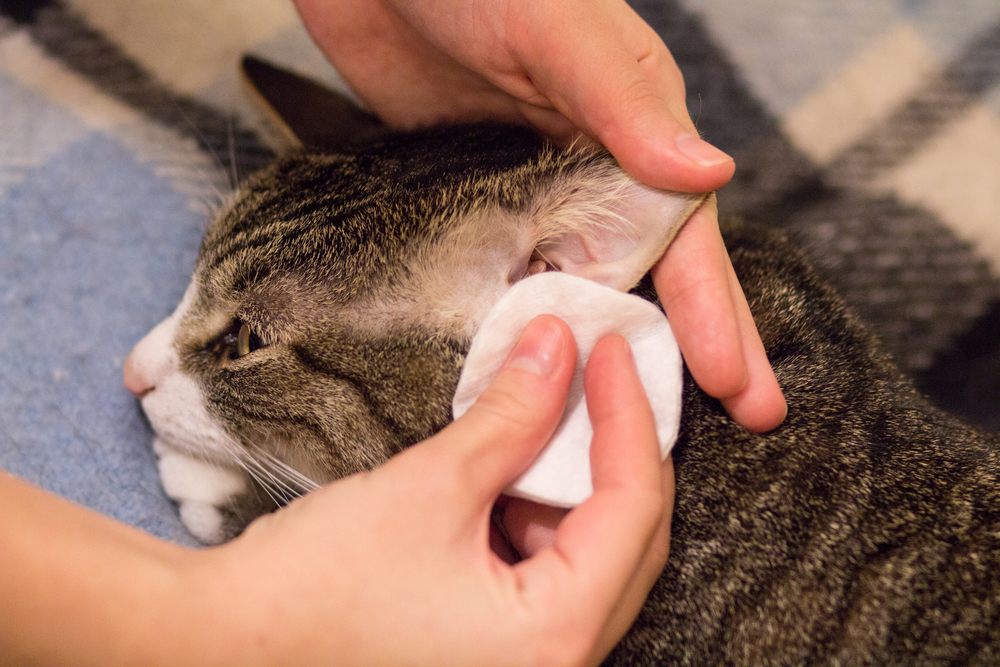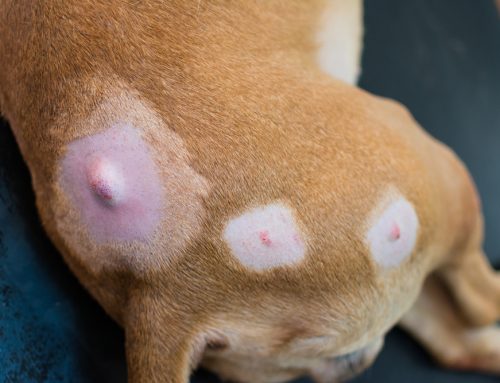Guam’s warm, wet climate provides the ideal growing ground for allergens, like pollen, mold, and fleas, that can trigger allergies in pets, and more and more cats and dogs are suffering from itchy skin and ears. To help you identify and manage allergies in your pet, our Guam Pet Hospital team has put together the following guide.
Allergy development in pets
When your pet breaks out in an itchy, scabby rash or suffers from chronic ear infections, they may have allergies, which occur when your pet’s immune system mounts an overactive response to a normally benign substance (i.e., allergen). Allergens can be any substance your pet contacts, and typically is something they have been exposed to multiple times, such as pollens or certain food products.
Allergy causes in pets
Pet allergies are typically assigned to one of three categories—environmental, flea, and food allergies. Listed below are some of the most common allergens in each category:
- Environmental allergies — Environmental allergies, which are also called atopic dermatitis or atopy, can be caused by anything your pet contacts in their environment. Environmental allergens, such as pollen, mold, grasses, trees, shrubs, dust mites, and storage mites, are often inhaled.
- Flea allergies — A protein in flea saliva causes allergic pets who are bitten by a flea to develop an itchy rash. A pet who is sensitive to flea bites may also develop more severe reactions when other insects, such as spiders, bees, and ants, bite or sting.
- Food allergies — A common misconception is that food allergies in pets are triggered by grains. However, food allergies are not common in pets, and pets who are allergic are much more likely to be reacting to the protein source in their diet, such as chicken, lamb, or beef, or to eggs, dairy, wheat, and soy.
Allergy signs in pets
People who experience allergies often sneeze and have itchy, watery eyes and a runny nose, while allergies in pets are much more likely to affect their skin than their nose and eyes. If your pet has allergies, you will likely notice:
- Red, inflamed skin
- Itchy skin and ears
- Constant licking, chewing, or scratching
- Hair loss
- Hot spots
- Head shaking
- Chronic skin or ear infections
- Anal gland impactions
Environmental allergies most commonly manifest on spots where your pet contacts the allergen. For example, a pet with grass allergies will have an itchy belly and paws. Pets with flea allergies typically have the classic flea bite dermatitis (FAD) appearance—a naked hind end that is covered in scabs from licking and chewing. Chronic ear infections and excessive scratching at the shoulders are often seen in pets with food allergies, as well as vomiting and diarrhea.
Keep in mind that your pet’s allergies will likely worsen with age. This means that seasonal allergies will last longer, with shorter “good” periods between itchy seasons, and year-round allergies will become more severe.
Allergy diagnosis in pets
Accurately diagnosing allergies in pets can be a time-consuming, costly endeavor, although we can often determine that your pet has an allergy to something they have come in contact with, but not know the exact allergen.
The first step toward an allergy diagnosis is ruling out other potential causes of itchy skin, like parasites, infection, or hormonal disorders. If we suspect your pet has a food allergy, we may recommend switching them to a diet with a different protein, or offer a prescription diet. To determine whether your pet has environmental allergies, we may judge their response to a short corticosteroid course that can indicate atopy if your pet shows vast improvement.
Allergy management in pets

Managing your pet’s allergies is a lifelong battle, because as their allergies change, their treatment must change to keep them comfortable. Therapies to help manage your pet’s itching and scratching include:
- Corticosteroids
- Antihistamines
- Medications that target the itch response (e.g., Apoquel, Cytopoint)
- Immunosuppressant medications
- Quality year-round flea prevention
- Prescription diets
- Supplements to support skin health
- Medicated shampoos
- Topical ointments
- Ear cleaners and medications
- Immunotherapy
At home, you can help manage your pet’s allergies by limiting their exposure. For example, if your pet’s belly and paws become itchy after walking outside, wipe them off with unscented wipes when returning indoors. Then, keep your pet off the grass as much as possible.
Does your pet have itchy skin and ears? If so, they may be allergic to a substance that they commonly come across in their environment. Contact our Guam Pet Hospital team to schedule an appointment, so we can identify the allergen and offer your furry pal relief.








Leave A Comment